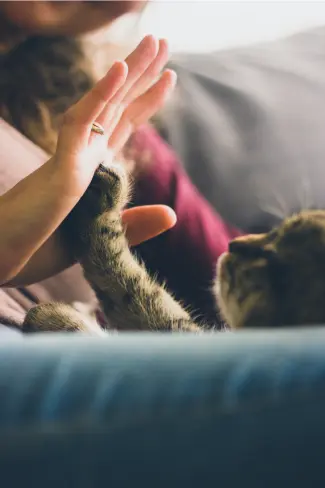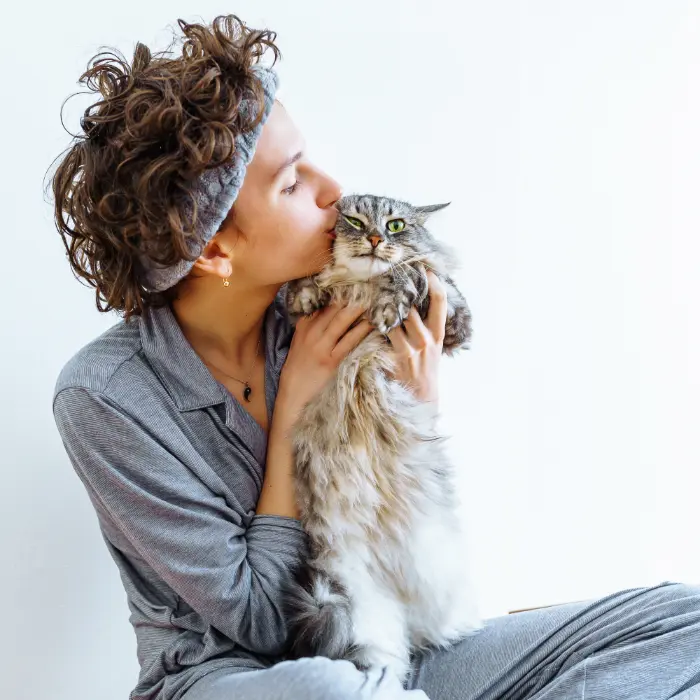Administering Insulin to Your Kitty: A Step-by-Step Guide
Gently hold skin near shoulder area, lift a small fold, slide insulin needle into fold at a slight angle, then press plunger slowly. Stay calm, speak softly, and offer praise or a small treat after shot. For clearer steps and confidence-building tips, please go through details below.
Look, managing a diabetic feline isn’t easy—it takes dedication and lots of love. Key to success? Mastering daily injections. This guide covers it all, with practical tips, firsthand stories, and plenty of encouragement to help you tackle it like a pro. You’ve got this!

Understanding Blood Sugar Regulation
Keeping glucose levels balanced is essential for felines with diabetes to stay energetic and comfortable. Before diving into steps, it’s important to understand how proper hormone management impacts overall condition and well-being.
Preparing for Injection
Gather Supplies
Have all necessary items ready—medication vial, syringe with prescribed needle, alcohol swabs, and some treats for positive reinforcement.
Check Medication Vial
Gently roll vial between palms to mix contents evenly. Avoid shaking, since it can create air bubbles.
Set Up a Comfortable Space
Choose a calm, cozy spot where both of you can stay relaxed. A peaceful setting helps make injection process smoother and less stressful.

The Insulin Shot Process
Step-by-Step Guide for Giving a Pet an Injection
Clean Hands Thoroughly
Start by washing hands well with warm water and soap. Scrub for at least 20 seconds, making sure to get between fingers and under nails. This keeps things hygienic and prevents unwanted germs from contacting a furry companion.
Prepare Syringe
Fill syringe with exact amount prescribed by a vet. Point it upward and gently tap side to let trapped air rise. This ensures correct dosage and smooth delivery.
Approach Gently and Reassure
Move in slowly—avoid sudden gestures or loud noises. Speak in a calm, soothing voice and maintain steady tone. Place hand gently on back or behind ears, wherever pet enjoys touch. These small gestures help them feel secure and more likely to stay still during routine.
Pinch Neck Area Gently
Find a soft, loose fold of skin near base of neck, usually between shoulder blades. Lightly lift with thumb and forefinger to form a small tent. This lifted area creates natural space just beneath surface, making injection easier and more comfortable.
Administer Injection
Guide needle into tented skin at roughly 45-degree angle, keeping it under surface and away from muscle. Press plunger slowly and steadily to release contents.

Changing Up the Spot: A Key Part of Managing Diabetes in Your Furry Friend
When managing insulin routines for a furry companion, it’s not just about mastering steps—it’s also about being thoughtful with how and where treatment is applied. One popular spot is loose skin just behind a neck. It’s easy to reach and usually causes minimal fuss. But here’s the catch—using one spot repeatedly can lead to changes under skin. Over time, this can make tissue tougher, making it harder for insulin to absorb properly.
To keep things running smoothly, switching up injection locations is wise. Alternating spots prevents buildup of dense or scarred areas, which can interfere with absorption. Different areas of a pet’s body absorb treatment at slightly different rates, so rotating sites can even out how consistently a companion feels each day. Plus, nobody wants a sore or sensitive patch from too much repeated poking. Keeping things varied makes injections more comfortable and effective over time.
Why Rotate Injection Sites?
Avoiding Skin Thickening from Repeated Use
Using one spot repeatedly for daily routines can make skin tougher and less responsive over time. This buildup can make it harder for a furry companion’s body to absorb treatment properly. A simple solution is to rotate injection locations each time. Doing so gives skin a chance to recover, keeps things running smoothly, and makes process more comfortable for a furry buddy.
Improved Absorption
A pet’s body doesn’t absorb treatment the same way everywhere. Some areas take it in faster or slower than others. Rotating spots helps support a more steady and predictable response, which can make a big difference in keeping sugar levels stable.
Easing Discomfort
Over time, certain areas can become sensitive. Switching injection sites during each session helps prevent soreness and makes routines feel less stressful. This gentle variety keeps companions more relaxed and cooperative when it’s time for daily care.
| Injection Site | Rotation Order |
| Left hind leg (lateral quadriceps) | 1 |
| Right hind leg (lateral quadriceps) | 2 |
| Left shoulder (triceps) | 3 |
| Right shoulder (triceps) | 4 |
| Left flank (midway between ribcage and hip) | 5 |
| Right flank (midway between ribcage and hip) | 6 |
Commonly Recommended Injection Sites:
1. Back of Neck
This area, just between shoulder blades, is popular among feline owners because of its flexibility and easy access. Skin here is naturally loose, making it simple to lift and form a small fold. When gently raised, this spot creates a natural pocket beneath surface, ideal for delivering substances under skin.
Many find this area helpful at first because it allows quick, confident work. Plus, most companions are less sensitive here, reducing reactions during routine.
Avoid using exact same point repeatedly. Over time, one spot can lead to toughened skin or minor irritation. Instead, pick slightly different spots within upper-back region each time—shifting aim just an inch or two left or right can make a big difference in comfort.
It also helps to keep a mental note, or jot down where you worked each day. Regular rotation keeps things smoother and ensures a companion stays comfortable throughout routine.
2. Shoulders and Flanks
Shoulder region and sides near midsection—often called flanks—have naturally loose skin, making them comfortable zones for daily hormone support. Using these spots along with scruff behind neck creates a pattern that avoids overusing one surface area.
Why rotate spots? Relying on one area consistently can cause skin to toughen or become more sensitive. Using shoulders and rib areas helps treatment absorb more smoothly while reducing chances of discomfort or tenderness. This makes a companion less likely to squirm or fuss.
A thoughtful rotation builds a steady rhythm—making process more predictable for caregiver and more pleasant for furry friend. Over time, many notice companions relaxing more once they realize injections are just part of daily routine.
3. Area Behind Front Legs – Gentle Alternative
For another practical spot that’s less likely to become sensitive, try soft skin tucked behind front legs. This area is flexible and loose, allowing gentle needle insertion without much fuss.
Stay calm and confident when using this area. Lift skin slightly with one hand to create a small tent-like fold. With other hand, position needle at about 45-degree angle and slide it under top layer of skin—avoid pressing too hard, aiming just beneath surface, not into muscle.
This location is often overlooked but can be very useful when other areas have been used recently. Keep track of which spot is used each time to prevent overuse or irritation. If a companion shows discomfort with one region, this spot serves as a smooth, comfortable alternative.
Adding praise or a small treat afterward reinforces positive experience and helps companions accept routine as a normal, safe part of their day.
Tips for Effective Site Rotation:
Create a Routine: Listen up, everyone! When giving those important doses to your furry friend, stick to a plan. Set up a rotation for where to administer them—switch spots with each dose or follow a set pattern over several days. This helps keep them feeling their best.
Track Placement Patterns
Make a habit of noting exactly which areas are used each time a dose is given. Keeping a clear log prevents overusing any one spot and ensures all regions get rest. Over time, this habit can reduce skin issues and make routine easier and more comfortable for a furry companion, especially during long-term treatment.
Consult a Veterinarian
Before changing a kitty’s routine, check in with a vet. They are experts and can provide personalized guidance based on a companion’s specific needs and health status.
Rotate Injection Sites
If a furry friend has this condition, rotating injection locations is essential. Changing spots prevents irritation and helps treatment absorb more effectively. It’s a small step that makes a big difference in comfort, consistency, and overall well-being.
Personal Experience: Facing the Initial Hurdles
John, a pet parent from California, shares his early struggles. He recalls, “At first, I worried about making my furry friend uncomfortable. But my vet explained that loose skin in that area makes injections much less bothersome. Trusting that advice really helped me relax and feel more confident.”
Post-Administration Care
Handling Used Needles Safely
After finishing an injection, never toss used needles or syringes into regular trash. Instead, place them in a puncture-proof container designed for sharps. These containers protect everyone—family members, sanitation workers, and curious pets—from accidental pricks. Proper disposal not only keeps your home safe but also supports a cleaner, more responsible environment. When container is full, bring it to a local pharmacy or biohazard disposal facility. A small step like this makes a big difference.
Rewarding a Furry Friend: A Moment of Joy
Once a task is done, it’s a perfect moment to celebrate with a whiskered buddy. Offer a favorite crunchy snack or spend a few minutes playing a preferred game. Positive follow-up helps companions associate routine with treats, affection, and bonding. Over time, this builds trust and makes daily care smoother for both of you.
Stay Observant
Pay attention to any shifts in mood, energy, or reactions—limping, flinching, hiding, or refusing food are all signals something may be off. If unusual behavior appears, contact a veterinarian promptly. Keeping a furry friend comfortable and feeling their best should always come first.
Case Study: Bella’s Remarkable Journey
Meet Bella, an adorable Siamese who faced a tough battle with her condition. Her devoted owner, Emily, embraced responsibility for managing treatment. This journey wasn’t just about care—it became a meaningful bonding experience for both.
Emily’s steady attention and emotional support worked wonders for Bella. Now, whenever Bella sees a treatment syringe, she starts purring—a sweet reminder of their strong connection.
Bella’s transformation shows how compassion and love can make a real difference in overcoming challenges.
Conclusion
Now listen up, friend, ’cause it’s time to talk ’bout givin’ shots to a sugar-sensitive kitty. It might feel a tad overwhelming at first, but no need to get rattled. With a bit of know-how and plenty of compassion, this can turn into a positive moment for both of ya.
Here’s how it goes: every kitty comes with a one-of-a-kind personality. Spend time learnin’ habits, favorites, and little quirks. Shape routine around what feels right for ’em. Think of it like a short, smooth dance—step in, step out, all done.
And here’s truth worth holdin’ onto, partner: stayin’ consistent ain’t only about managing a condition. Nope. It’s about buildin’ trust and deepenin’ connection with a furry companion. It quietly says, “I’ve got you.” So keep goin’, friend. You’re showin’ up, and that means more than you know.
Now, if ya need more tips or got any other questions, just holler, eh?



